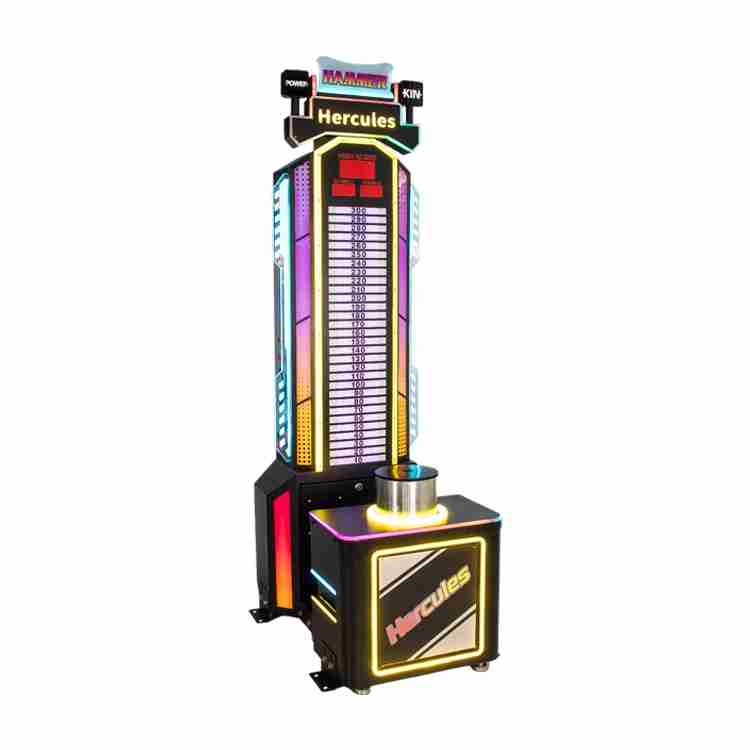Bold Strategy: Employing Punching Bag Machine Arcade to Revamp Your Park
Welcome to an in-depth exploration designed for arcade enthusiasts, game operators, and players who seek to understand the intricacies of one of the most engaging entertainment equipment types — the punching bag machine arcade . Whether you’re managing a bustling amusement park, a family entertainment center, or simply passionate about arcade sports games, recognizing how these machines measure performance and deliver rewarding gameplay is crucial.
Grasping the underlying game and scoring mechanisms not only enhances player experience but also maximizes the commercial potential of these units. This article breaks down the complex interactions between player skill and machine technology, offering both macro-level insights and practical knowledge drawn from authoritative industry data and seasoned operational experience.
Understanding the Game Mechanics of Punching Bag Machine Arcades
2.1 What Defines the Game Mechanics?
At its core, the game mechanics of a punching bag machine arcade refer to how player input—punches—translates into measurable performance within the game. The machine’s sensors capture key attributes such as force, speed, and timing, transforming these physical actions into a digital score that reflects both power and precision.
Several factors influence player performance:
- Punch Speed and Force: The interplay of how fast and how hard the player strikes the punching bag.
- Punch Accuracy: Hitting the optimal striking zones on the bag maximizes sensor feedback.
- Rhythm and Timing: Maintaining consistent strikes in sequences can trigger combos or bonus scoring.
- Technique: Proper footwork and body mechanics influence the stability and power behind punches.
In combination, these elevate the immersive quality of the gameplay and encourage repeat play through skill mastery.
2.2 Dissecting the Scoring Mechanism
The scoring is an intricate system relying on embedded sensors such as strain gauges, accelerometers, and pressure sensors located inside the punching bag or target pads. These detectors capture the magnitude and velocity of each punch and feed data to proprietary algorithms that compute the final score.
The typical scoring breakdown includes:
- Impact Force Measurement: Directly proportional to the immediate punch intensity.
- Speed Factor: Quick successive hits can multiply the force effect.
- Combo Bonuses: Consecutive, successful punches without misses increase the multiplier for higher scores.
- Special Modes and Multipliers: Some arcade machines feature timed modes or challenge rounds with scoring boosts.
Game calibration and regular maintenance are critical to ensure scoring accuracy and fairness. For example, a well-calibrated sensor array can distinguish between a gentle jab and a full-power strike, which influences ranking and player motivation.
2.3 Pay and Reward Systems
Most punching bag machine arcades operate on coin, bill acceptor, card reader, or digital payment systems, allowing flexible access models. The pay-to-play approach typically unlocks single or multiple game modes:
- Standard Mode: Single round focused on maximum punch strength.
- Combo Training: Emphasizes rhythm and continuous hitting to encourage skill building.
- Multiplayer Battles: Players alternate or simultaneously compete for score supremacy.
Scoreboards and real-time feedback screens display results instantly. Players can often redeem points for prizes or unlock additional gameplay features, which enhance engagement and repeat visits.
Analyzing the Scoring System
3.1 Key Parameters Influencing Scores
Understanding what counts most towards high scores helps players refine their techniques and operators optimize gameplay settings. The main parameters are:
| Scoring Element | Impact on Score | Typical Weighting |
|---|---|---|
| Force (Punch Power) | Primary determinant for base points | 50% |
| Speed (Punch Velocity) | Increases score multiplier when high | 25% |
| Accuracy (Hit Location) | Rewards targeted hits on sensor zones | 15% |
| Combos and Technique | Bonus points for consecutive successes and style | 10% |
Penalties also apply for missed or off-target punches, which detract from combo chains and reduce scoring potential. Multiplayer or training modes apply variants of these calculations to balance fairness and challenge.
3.2 Rating Tiers Across Skill Levels
Most arcade machines classify player performance into ratings such as “Novice,” “Intermediate,” “Advanced,” and “Champion.” These are calibrated based on total score thresholds, which differ between machines. For example:
- Novice: Scores below 1000 – suitable for beginners learning technique.
- Intermediate: Scores between 1000 and 2000 – players showing solid skill.
- Advanced: Scores between 2000 and 3000 – high power and accuracy demonstrated.
- Champion: Scores above 3000 – elite, consistent players with excellent technique.
This hierarchy motivates players to improve, adding social competition dynamics especially when linked to a public leaderboard or app integration.
Average Scores: Their Meaning and Usage
The average score across multiple sessions or players provides essential insights:
- For players: It serves as a realistic benchmark to set improvement goals.
- For operators: It identifies popularity and difficulty balance to optimize machine settings and revenue.
By comparing an individual’s score against the average, players gauge their relative competence. Operators can create tiered prize systems or promotional challenges based on these averages to boost engagement.
Strategies and Techniques to Boost Your Score
From personal observations managing arcade sports units, I’ve noticed that players benefit immensely from focusing on the following:
Speed and Coordination
Training exercises that improve hand speed and coordination translate directly into higher punch counts and combo chains. Consistent practice using rapid sequences enhances these skills.
Strength and Form
Building upper body and core strength amplifies punch force. I advise users to adopt proper punching techniques with hip rotation and stance stability to maximize power transfer.
Precision Targeting
Learning the sweet spots based on machine feedback encourages higher accuracy scores. Operators can provide visual aids or practice modes to support this learning.
Device Familiarity
Knowing machine response latency and calibrations allows players to time punches optimally. In one entertainment center I managed, players improved average scores by 15% after a guided tutorial session.
Practice Mode and Multiplayer
Utilizing practice features and competitive modes hones focus and stress management, essential under timed conditions or high-stakes scenarios.
Conclusion
Fully understanding the complex game mechanics and nuanced scoring systems of punching bag machine arcade units empowers both players and operators. For players, it unlocks pathways to refining skills, setting realistic goals, and experiencing greater satisfaction through improved performance and rankings. For operators, it enhances machine calibration, attracts diverse user segments, and drives sustained revenue through well-designed engagement models.
By combining trusted industry data with practical experience, I’ve seen firsthand how strategic deployment and player education transform these machines into central attractions of any entertainment venue. Embrace these insights to revitalize your park space and deliver thrilling, rewarding experiences today.
References:
– Lifun, “Punching Bag Arcade Game: How It Works, Why Scores Vary & Tips To Win”
– YUTO Games, “Mastering Arcade Punching Machine Game Mechanics To Get High Scores,” May 29, 2024
– Funspace, “How To Beat Arcade Punch Machine: Principles & Techniques”
– TikTok, “Understanding Punch Machine Levels and Scoring,” May 5, 2025
– Google Search Snippet – “How Do Arcade Punching Machines Work”



















MARWEY
MARWEY
MARWEY
MARWEY
MARWEY
MARWEY